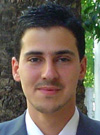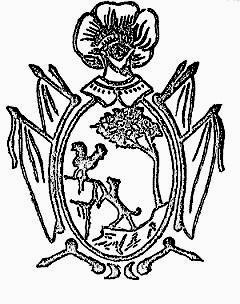 |
My
family includes several family branches deriving from several different
nationalities. My mother is from the Braggiotti family. It is usually
difficult to connect the different branches of this Italian family of
Smyrna.
According to Willy Sperco, a Levantine writer, this noble family takes its origin from Venice. He states that they first went to Milan, and then to Chios. They left Chios around 1800, and established branches in Smyrna and Constantinople. In the Catholic church registers of Chios of baptisms, marriages and deaths, we encounter the family name by the year 1500.
An Italy based fellow researcher, Mrs. Elisa Petitta (a descendant of the D’Andria and Braggiotti families), as a result of her investigations, found a manuscript conserved by Eddy Braggiotti at La Spezia (presumably he was a resident there) that shows in the genealogical tree of Constantine Braggiotti, that the family were established in the island of Chios around 1660.
According to a document presented by Vincenzo Braggiotti to the French Consulate of Smyrna in 1807, the family was established in Chios from ancient times and is connected to several Latin families, especially to the Castelli family. It takes its origin from Milan, where in the Archive of St. Catherine the family crest with its own surname is conserved.
Melih Gürsoy, a Turkish writer, informs us in p.223 that the Braggiotti family had the biggest flour mills
of Smyrna in 1893. But by the 1930s the family had rented out the flour
mills, thus pulling out from this trade.
p.223 that the Braggiotti family had the biggest flour mills
of Smyrna in 1893. But by the 1930s the family had rented out the flour
mills, thus pulling out from this trade.
According to Willy Sperco, a Levantine writer, this noble family takes its origin from Venice. He states that they first went to Milan, and then to Chios. They left Chios around 1800, and established branches in Smyrna and Constantinople. In the Catholic church registers of Chios of baptisms, marriages and deaths, we encounter the family name by the year 1500.
An Italy based fellow researcher, Mrs. Elisa Petitta (a descendant of the D’Andria and Braggiotti families), as a result of her investigations, found a manuscript conserved by Eddy Braggiotti at La Spezia (presumably he was a resident there) that shows in the genealogical tree of Constantine Braggiotti, that the family were established in the island of Chios around 1660.
According to a document presented by Vincenzo Braggiotti to the French Consulate of Smyrna in 1807, the family was established in Chios from ancient times and is connected to several Latin families, especially to the Castelli family. It takes its origin from Milan, where in the Archive of St. Catherine the family crest with its own surname is conserved.
Melih Gürsoy, a Turkish writer, informs us in
My
mother, Linda Braggiotti, is a descendant from Giorgio Braggiotti who
was born at Milan in the eighteenth century and died in Smyrna. The
line runs thus: Giorgio Braggiotti I, Giorgio Braggiotti II (1821-1907),
Edouard Braggiotti (1871-1952), Fernand Braggiotti (1899-1979), Marcel
Braggiotti (1931), Linda Braggiotti (1958). But my family includes also
another branch of this family.
My grand father Marcel Braggiotti was born in Smyrna in 1931, as one of the eight children of Fernand Braggiotti and Yvonne Raphtopoulo (daughter of Aristidhis Raphtopoulo, head of the train station of Menemen). In 1939, he was sent to Italy by his parents, with his brothers and other children of Italian families of Smyrna to a summer camp set up by Mussolini. Unfortunately the war began when they were in Italy. There, he was separated from his brothers, because he was ill. He was reunited with his brothers and friends only at the end of the camp season.
My grandfather went first to the Italian School of the Salesians of Don Bosco (closed in September 1945) in the Punta quarter of Smyrna (actually the Italian primary school of Alsancak), and then to the Saint Joseph French College of the De La Salle Brothers, also in Alsancak on 1462 street.
Note: Denise Bragiotti (article online on the houses of Bornova) is the daughter of Yvo Braggiotti, one of the seven brothers of my grandfather Marcel Braggiotti.
My grand father Marcel Braggiotti was born in Smyrna in 1931, as one of the eight children of Fernand Braggiotti and Yvonne Raphtopoulo (daughter of Aristidhis Raphtopoulo, head of the train station of Menemen). In 1939, he was sent to Italy by his parents, with his brothers and other children of Italian families of Smyrna to a summer camp set up by Mussolini. Unfortunately the war began when they were in Italy. There, he was separated from his brothers, because he was ill. He was reunited with his brothers and friends only at the end of the camp season.
My grandfather went first to the Italian School of the Salesians of Don Bosco (closed in September 1945) in the Punta quarter of Smyrna (actually the Italian primary school of Alsancak), and then to the Saint Joseph French College of the De La Salle Brothers, also in Alsancak on 1462 street.
Note: Denise Bragiotti (article online on the houses of Bornova) is the daughter of Yvo Braggiotti, one of the seven brothers of my grandfather Marcel Braggiotti.
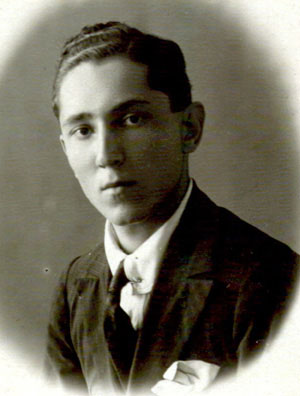 |
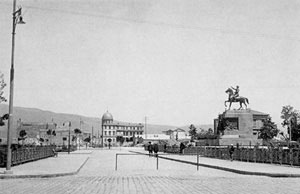 |
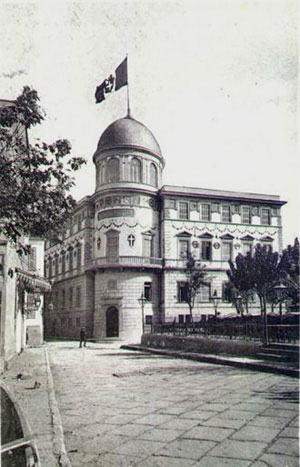 |
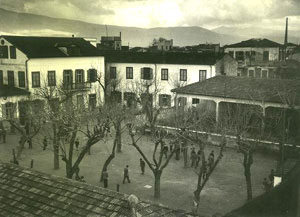 |
His
father Fernand, was the son of Edouard Braggiotti and Jeanne Duhard.
(She was born at Paris, as the first daughter of Philippe Duhard. The
family was engaged in viniculture. My grandfather would recall that
her grandmother sat on the knees of Jules
Verne when she was a child!) Fernand Braggiotti worked first for
the C. J. Giraud & Co, and after 1939 in the Oto Traktör Türk
A.Ş. again with the Giraud family. The eldest of his eight children
was Eddy Braggiotti (1924-1977) who worked for NASA in the United States,
especially in the mission of man’s first landing on the moon, in 1969.
My grandfather Marcel also worked for the Oto Traktör Türk A.Ş. with his father, in the commerce of Massey-Ferguson tracktors. He was also a student for three months at the Ferguson School of Mechanized Farming at Stoneleigh Abbey in England in 1951.
This Braggiotti branch was also connected with other Levantine families like the De Portu of Chios, the Binson, (Europeanized form of Binoğlou, an Armenian family of Ankara) or the Balladur (another Armenian family of Nahcivan region, actually in Azerbaijan, Latinized in the 14th century by the Dominican priests of the region). The XXVth volume of ‘Dictionnaire d’histoire et de géographie ecclésiastique’, refers to a Fr. Thomas Issavedens, who was born in Nahcivan, where the Dominicans had Latinized the population in the XIV century.
In 1953, my grandfather married Teodora Tarrabocchia, my grandmother. The Tarrabocchia family originated from Mali Losinj (Lussinpiccolo), the capital of the Losinj Island since 1806. The island is situated in the Istrian region of Dalmatia. After a history of domination by different powers, such as the Italians, the Austrians, the island is now part of the Croatian Republic.
We encounter the Tarrabocchia family in the parish records of Mali Losinj, from 1670 to 1700, and it also appears in wills of a century earlier. These parish records reveal the use of second family names along with the surname. These secondary names were used to distinguish between different family lines carrying the same surname. The second family names for the Tarrabochia's were (Matulich), (Pilicar), and (Svirac).
My grandfather Marcel also worked for the Oto Traktör Türk A.Ş. with his father, in the commerce of Massey-Ferguson tracktors. He was also a student for three months at the Ferguson School of Mechanized Farming at Stoneleigh Abbey in England in 1951.
This Braggiotti branch was also connected with other Levantine families like the De Portu of Chios, the Binson, (Europeanized form of Binoğlou, an Armenian family of Ankara) or the Balladur (another Armenian family of Nahcivan region, actually in Azerbaijan, Latinized in the 14th century by the Dominican priests of the region). The XXVth volume of ‘Dictionnaire d’histoire et de géographie ecclésiastique’, refers to a Fr. Thomas Issavedens, who was born in Nahcivan, where the Dominicans had Latinized the population in the XIV century.
In 1953, my grandfather married Teodora Tarrabocchia, my grandmother. The Tarrabocchia family originated from Mali Losinj (Lussinpiccolo), the capital of the Losinj Island since 1806. The island is situated in the Istrian region of Dalmatia. After a history of domination by different powers, such as the Italians, the Austrians, the island is now part of the Croatian Republic.
We encounter the Tarrabocchia family in the parish records of Mali Losinj, from 1670 to 1700, and it also appears in wills of a century earlier. These parish records reveal the use of second family names along with the surname. These secondary names were used to distinguish between different family lines carrying the same surname. The second family names for the Tarrabochia's were (Matulich), (Pilicar), and (Svirac).
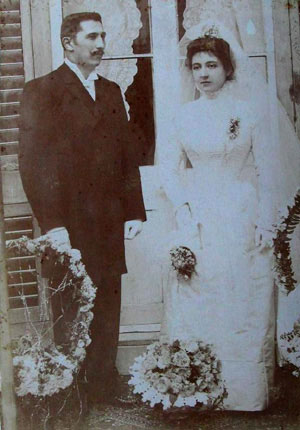 |
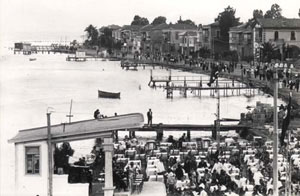 |
My
grandmother (my mother’s mother), Teodora Tarabocchia, was born in Cordelio,
known today by its Turkish name, Karşıyaka. She went to the
Italian School La Centrale of the Sisters of Charity of the Immaculate
Conception of Ivrea, from 1936 until 1945. In 1945, it was decided to
open a new avenue, called now İkinci Kordon, running parallel to
the sea and this beautiful building has since been demolished, and the
school closed.
My grandmother is a descendant of Pietro Tarrabocchia born around 1812. Her father also was called Pietro Tarrabocchia, also born in Smyrna, Cordelio in 1908. The story of his baptism is interesting. A shuttle ship running between Cordelio and Smyrna collided with a big ship in the gulf, around 1908. A man (not the captain) who was drunk was left hanging on the anchor of the big ship, ejected from the other ship by the force of the impact and promised that if he was rescued he would baptize ten children and arrange for the sacrifice of several animals. He was rescued and one of these children who received a baptism was Pietro Tarrabocchia himself. Much later, I discovered from the Cordelio parish records that the name of his godfather was a Greek by the name of Panayotis Veropoulos. Many Levantine families of Smyrna have different memories about this accident.
My grandmother is a descendant of Pietro Tarrabocchia born around 1812. Her father also was called Pietro Tarrabocchia, also born in Smyrna, Cordelio in 1908. The story of his baptism is interesting. A shuttle ship running between Cordelio and Smyrna collided with a big ship in the gulf, around 1908. A man (not the captain) who was drunk was left hanging on the anchor of the big ship, ejected from the other ship by the force of the impact and promised that if he was rescued he would baptize ten children and arrange for the sacrifice of several animals. He was rescued and one of these children who received a baptism was Pietro Tarrabocchia himself. Much later, I discovered from the Cordelio parish records that the name of his godfather was a Greek by the name of Panayotis Veropoulos. Many Levantine families of Smyrna have different memories about this accident.
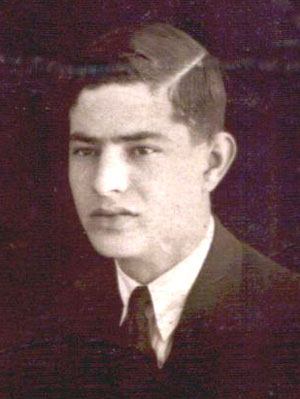 |
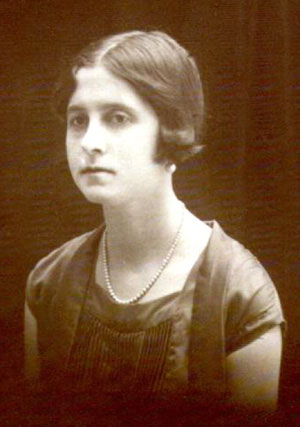 |
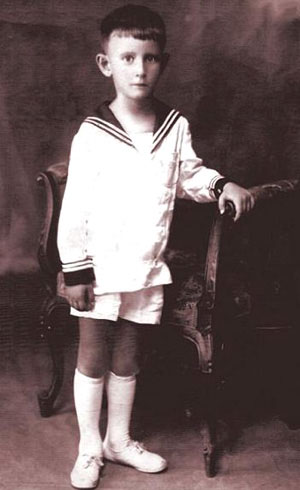 |
Pietro
Tarrabocchia worked for the Oriental
Carpet Company. He was the son of André Tarrabocchia and
Marie Vidori. His parents André and Marie, with their newborn
first son Marius were amongst the first pilgrims to visit the House
of the Virgin Mary at Ephesus, around 1900. It is said that she was
not able to bear a child, and that she used the spring water emenating
from this place and offered by a sister of the order. And then she became
pregnant. This case was described in the magazine “Notre-Dame d’Ephèse”
published in Istanbul April 1957 (year 1, no:3 - author’s name not recorded)
with all the details, and the names of the doctors that had consulted
Marie Tarabocchia, before and after the case. And the couple later visited
the shrine with the “fruit of this miracle”, to give thanks to the Virgin
Mary.
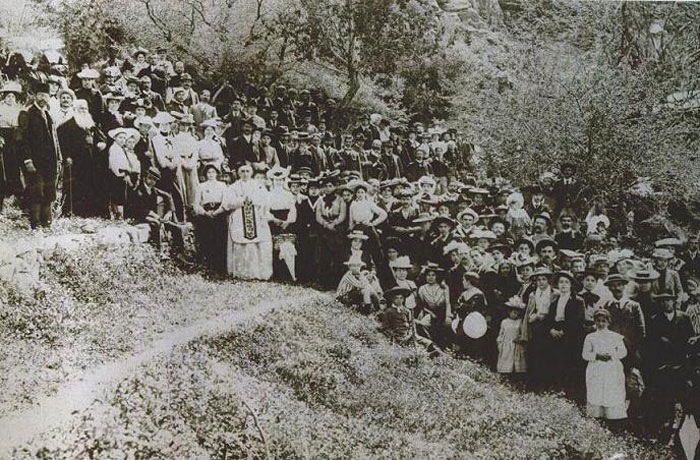 |
In addition I found in “Mois de Notre-Dame d’Ephèse – Istanbul 1960”, p.63, a chapter about “The Pilgrimages”. The first official pilgrimage was on May 20th 1896, with Mons. Timoni, the clergyman, and around 1300-1400 pilgrims attended this trip. The departure from Smyrna was at 5.00 am, arrival at Aya Suluk Station at 7.00 and at 9.00 a mass was celebrated by Mons. Timoni at Panaya with the return journey at 15.00. These pilgrimages continued regularly for around 20 years and were interrupted in 1914, because of the War: Bülbüldağ where the Virgin Mary’s house was situated was occupied by soldiers. There were famous orators, P. Vigoureux in 1906, Mons. Netzammer in 1910, P. Bruno from Paris in 1908, etc.
Pietro Tarrabocchia married Louise Seybald in 1930. She was a descendant of a Dutch family, from Christian Seybald born in the eighteenth century. They are different hypotheses about this family. It is said that a man at the service of the House of Orange of Holland called Jordan, became a prisoner of the Ottomans around 1780. When his captors asked his name, he replied he was from the Baltic Sea that gives the origin to the name Van Seebald. When he regained his freedom, he decided to establish himself in Smyrna.
Note: A descendant of the Seybald family, a distant cousin of Fabio, France based Nathalie Seybald, states the family has 3 different theories on the origin of their surname. For details hover here:
The mother of Louise Seybald was Emma D’Andria, a descendant of Pantaleone D’Andria, a Genoan merchant established in Chios in 1565. They are nine generations between Pantaleone and Emma. The big part of the D’Andria family left the island after the massacres of Chios in 1822.
The Tarrabocchia family is connected with other families like the Dimech, Sergio, Prelorenzo (from the Aegean island of Tinos), De Stefani, Daumas (from Grasse, Provence in France), Datodi (from Chios), Charikiopoulo (from Tinos), Rigo (from Tinos), Castelli (Genoan family of Chios), Zipcy, Rossi, and many others.
Note: The grandson of fellow contributor Al Simes’ is Andrew, whose mother is Marina Corsini and the father of Marina was Manfredo Corsini. Dora Tarrabocchia was the mother of Manfredo, the sister of Pietro Tarrabocchia, and the second child of André and Marie.
Pietro Tarrabocchia married Louise Seybald in 1930. She was a descendant of a Dutch family, from Christian Seybald born in the eighteenth century. They are different hypotheses about this family. It is said that a man at the service of the House of Orange of Holland called Jordan, became a prisoner of the Ottomans around 1780. When his captors asked his name, he replied he was from the Baltic Sea that gives the origin to the name Van Seebald. When he regained his freedom, he decided to establish himself in Smyrna.
Note: A descendant of the Seybald family, a distant cousin of Fabio, France based Nathalie Seybald, states the family has 3 different theories on the origin of their surname. For details hover here:
The mother of Louise Seybald was Emma D’Andria, a descendant of Pantaleone D’Andria, a Genoan merchant established in Chios in 1565. They are nine generations between Pantaleone and Emma. The big part of the D’Andria family left the island after the massacres of Chios in 1822.
The Tarrabocchia family is connected with other families like the Dimech, Sergio, Prelorenzo (from the Aegean island of Tinos), De Stefani, Daumas (from Grasse, Provence in France), Datodi (from Chios), Charikiopoulo (from Tinos), Rigo (from Tinos), Castelli (Genoan family of Chios), Zipcy, Rossi, and many others.
Note: The grandson of fellow contributor Al Simes’ is Andrew, whose mother is Marina Corsini and the father of Marina was Manfredo Corsini. Dora Tarrabocchia was the mother of Manfredo, the sister of Pietro Tarrabocchia, and the second child of André and Marie.
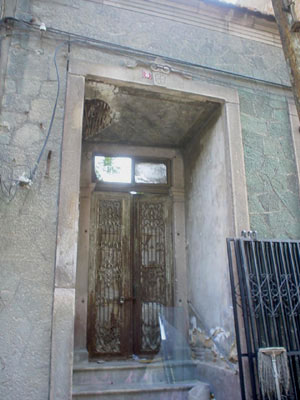 |
 |
My
father, Giuseppe Tito (called Fefo), is from the Tito family that takes
its origin from Trani, a town near Bari in Italy. He is a descendant
of Savino Tito from Trani born in the eighteenth century.
His father Gaetano Tito and his two brothers were born in a house, still standing, in the 1462 Sokak, called formerly Boulevard Aliotti or also Binbaşı Şerafeddin Bey Caddesi. (He went to the Saint Joseph College, on the same street.) The house is now in a ruinous state, due to heritage problems. This house was constructed by Giuseppe Tito, the grandfather of Gaetano. Giuseppe Tito had five children, his second child was Umberto Tito born in 1890, the father of Gaetano.
Umberto Tito worked for the Ottoman Railways Company in Aydın and was dismissed in 1915, because of the Italian-Turkish war. Then, he worked for the Mac Andrews & Forbes, in the commerce of licorice. He married to Vincenza Parise in 1919. Vincenza was born in Alaşehir, formerly called Philadelphia, site of one of the seven churches of the Apocalypse.
My grandfather Gaetano was sent to Italy when he was a child, and met there my other grandfather Marcel Braggiotti (both being children of Italian families of Smyrna), during the Second World War. He became a jeweler in 1944 (a proffession my father also followed). He opened a shop in the jeweler’s bazaar of Kemeraltı, no. 56.
This Tito family is connected to families like Fabiano (also from Trani), Papagno, Ruggieri (from Tinos) and others.
His father Gaetano Tito and his two brothers were born in a house, still standing, in the 1462 Sokak, called formerly Boulevard Aliotti or also Binbaşı Şerafeddin Bey Caddesi. (He went to the Saint Joseph College, on the same street.) The house is now in a ruinous state, due to heritage problems. This house was constructed by Giuseppe Tito, the grandfather of Gaetano. Giuseppe Tito had five children, his second child was Umberto Tito born in 1890, the father of Gaetano.
Umberto Tito worked for the Ottoman Railways Company in Aydın and was dismissed in 1915, because of the Italian-Turkish war. Then, he worked for the Mac Andrews & Forbes, in the commerce of licorice. He married to Vincenza Parise in 1919. Vincenza was born in Alaşehir, formerly called Philadelphia, site of one of the seven churches of the Apocalypse.
My grandfather Gaetano was sent to Italy when he was a child, and met there my other grandfather Marcel Braggiotti (both being children of Italian families of Smyrna), during the Second World War. He became a jeweler in 1944 (a proffession my father also followed). He opened a shop in the jeweler’s bazaar of Kemeraltı, no. 56.
This Tito family is connected to families like Fabiano (also from Trani), Papagno, Ruggieri (from Tinos) and others.
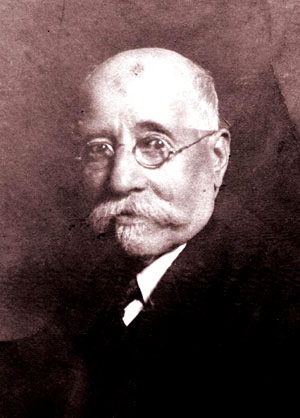 |
Gaetano married to Eliane De Portu in 1946. The De Portu Family is an
ancient Genoan family. The De Portus were notaries in Chios since the
1400s. My grandmother Eliane is a descendant of Vincenzo De Portu. Vincenzo
De Portu was married to Catherine, descendant of the Mamachi de Lusignan
that came from Cyprus. Their son Nicorozis De Portu was born in Chios
in 1729. He was a public notary at Chios, merchant and traveler. L.
A. Missir studied his manuscript conserved in Chios, in his work,
“Le livre de raison de Nicorozis III de Portu”, it contains the genealogical tree of the family since the 15th century. We understand that the family was on the Chios Island at least since 1350.
The Mamachi Lusignan family could have descended from the Lusignan dynasty of the Kings of Cyprus. Until recently I didn’t know how to find a connection for the 300 years between the end of the dynasty in the 1470s, to the 1700s. Guy de Lusignan, talks of two Lusignans who left Cyprus and established themselves in Chios, in his book “Mes familles, nos memoires”. However in the book, “Familles Latines de l’Empire Ottoman, Ed. Isis, 2004” (Missir), p.81, there is a genealogical tree that shows the ascendance of Catherine Mamachi de Lusignan (1703-1782) married to Vincenzo De Portu, until Janus De Lusignan (1374-1432), King of Jerusalem, Cyprus and Armenia.
The mother of Eliane, was Blanche Arcas, a family from Aleppo. The father of Blanche, Joseph Arcas, used to run a farm at Salihli in the Anatolian hinterland. The mother of Blanche was Alice Issaverdens (gift of Jesus, in the Persian language). This Armenian family, left the village of Khochekachène, in the Nahcivan region, and came to Smyrna, around 1720. Fr. Thomas Issaverdens, born in 1704 at Khochekachène, and other Dominican priests of the region, guided the family during this exodus through the Anatolia.
Note: Blanche Arcas is related to fellow contributor Giuseppe Herve Arcas as he is the son of Albert Arcas, the brother of Blanche. Joseph must be the same name as Giuseppe referred to in his testimony, the contributor’s grandfather who ran the farm.
The De Portu family is connected to families like, De Stefani, Guglielimi (They came from Genoa to Chios), Nipote (from the Piemonte region), Zochazian (an Armenian family of Ankara), Micridis, and others. The De Portu surname still survives in Izmir, through Georges De Portu, an architect, cousin of my father (being the son of Fernand De Portu, the brother of my grandmother Eliane), but he has no children.
More recently (2006) viewing the Italian Consulate registers of Izmir, I found 4 main Tito families who lived in Izmir, however I don’t know how these individuals are related.
Sabino Tito son of Giuseppe I (death before 1871), sailor, born in 1835 at Trani, married to Angela Papagno (I descend from them)
Giuseppe II Tito (alive in 1871) son of Sabino, sailor, born in 1812 at Trani, married to Angela Fabiani
Gennaro Tito, born around 1790 at Trani, married to Angela Di Fonzo
Lorenzo Tito, from Sorrento, married to Maria Schistra [or Xistra].
The Mamachi Lusignan family could have descended from the Lusignan dynasty of the Kings of Cyprus. Until recently I didn’t know how to find a connection for the 300 years between the end of the dynasty in the 1470s, to the 1700s. Guy de Lusignan, talks of two Lusignans who left Cyprus and established themselves in Chios, in his book “Mes familles, nos memoires”. However in the book, “Familles Latines de l’Empire Ottoman, Ed. Isis, 2004” (Missir), p.81, there is a genealogical tree that shows the ascendance of Catherine Mamachi de Lusignan (1703-1782) married to Vincenzo De Portu, until Janus De Lusignan (1374-1432), King of Jerusalem, Cyprus and Armenia.
The mother of Eliane, was Blanche Arcas, a family from Aleppo. The father of Blanche, Joseph Arcas, used to run a farm at Salihli in the Anatolian hinterland. The mother of Blanche was Alice Issaverdens (gift of Jesus, in the Persian language). This Armenian family, left the village of Khochekachène, in the Nahcivan region, and came to Smyrna, around 1720. Fr. Thomas Issaverdens, born in 1704 at Khochekachène, and other Dominican priests of the region, guided the family during this exodus through the Anatolia.
Note: Blanche Arcas is related to fellow contributor Giuseppe Herve Arcas as he is the son of Albert Arcas, the brother of Blanche. Joseph must be the same name as Giuseppe referred to in his testimony, the contributor’s grandfather who ran the farm.
The De Portu family is connected to families like, De Stefani, Guglielimi (They came from Genoa to Chios), Nipote (from the Piemonte region), Zochazian (an Armenian family of Ankara), Micridis, and others. The De Portu surname still survives in Izmir, through Georges De Portu, an architect, cousin of my father (being the son of Fernand De Portu, the brother of my grandmother Eliane), but he has no children.
More recently (2006) viewing the Italian Consulate registers of Izmir, I found 4 main Tito families who lived in Izmir, however I don’t know how these individuals are related.
Sabino Tito son of Giuseppe I (death before 1871), sailor, born in 1835 at Trani, married to Angela Papagno (I descend from them)
Giuseppe II Tito (alive in 1871) son of Sabino, sailor, born in 1812 at Trani, married to Angela Fabiani
Gennaro Tito, born around 1790 at Trani, married to Angela Di Fonzo
Lorenzo Tito, from Sorrento, married to Maria Schistra [or Xistra].
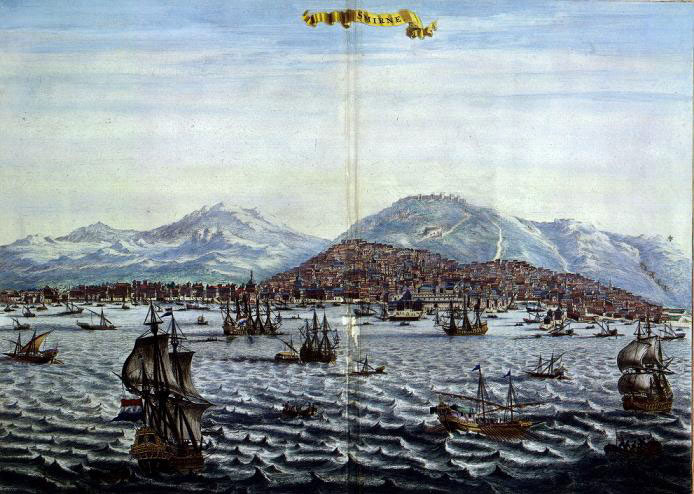 |
Notes:
1- Fabio Tito has created a web site dedicated to the St. Rosario church in Alsancak, viewable here:
There are 10 copies of Raymond Pere’s architectural sketches, “the St. Vincent family of Smyrna”, religious order of St. Vincent de Paul that includes the Lazaristes and the sisters of Charity, retained in the archives of St. Polycarp church, kindly scanned and supplied by Fabio Tito, viewable here.
2- Fabio is continuing this family research with its many branches and would welcome any assistance to further this work, and can be contacted via fabiotito[at]hotmail.com.
3- In Feb. 2006 Fabio has been able to work out exactly how his family is connected with one of the most important Latin families of Chios, the Castellis, through the work of Livio A. Missir published in this booklet “Identita Genealogica e Araldica, Torino, 1998”, published by the ministry of cultural assets / state archives in 2000, following the 23rd international genealogical and heraldic conference held in Turin on 21-28 September 1988 - click here to view this lineage:
4- In Feb. 2010 Fabio was able to retrieve and scan photos from an album inherited from his grandmother, but dating to an earlier era. There are few clues as to the identities of the person, but hopefully over time more faces will get names through cross-research - viewable here:
Using these set of photos as a starting point, Fabio has gone on to create a shortlist of photographers active in Smyrna pre-1922, viewable here:
5- In March 2011 Fabio was able to retrieve and scan documents pertaining to the old Tito house that used to stand on 4 Boulevard Aliotti / Scagliarino Sokak, Punta.
6- In March 2012 Fabio was able to create a listing of Levantine Catholic priests and nuns - range of photos, mostly born in Izmir, currently in Italian only and would welcome further information from descendants to build up detail.
6- In May 2025 Fabio submitted an article he has been working for a considerable time on one of his ancestors: Perillustrissimo Rodolfo Braggiotti (1720 c. - 1796) and will welcome additional information or corrections on this work.
 interview date 2005-11
interview date 2005-11
1- Fabio Tito has created a web site dedicated to the St. Rosario church in Alsancak, viewable here:
There are 10 copies of Raymond Pere’s architectural sketches, “the St. Vincent family of Smyrna”, religious order of St. Vincent de Paul that includes the Lazaristes and the sisters of Charity, retained in the archives of St. Polycarp church, kindly scanned and supplied by Fabio Tito, viewable here.
2- Fabio is continuing this family research with its many branches and would welcome any assistance to further this work, and can be contacted via fabiotito[at]hotmail.com.
3- In Feb. 2006 Fabio has been able to work out exactly how his family is connected with one of the most important Latin families of Chios, the Castellis, through the work of Livio A. Missir published in this booklet “Identita Genealogica e Araldica, Torino, 1998”, published by the ministry of cultural assets / state archives in 2000, following the 23rd international genealogical and heraldic conference held in Turin on 21-28 September 1988 - click here to view this lineage:
4- In Feb. 2010 Fabio was able to retrieve and scan photos from an album inherited from his grandmother, but dating to an earlier era. There are few clues as to the identities of the person, but hopefully over time more faces will get names through cross-research - viewable here:
Using these set of photos as a starting point, Fabio has gone on to create a shortlist of photographers active in Smyrna pre-1922, viewable here:
5- In March 2011 Fabio was able to retrieve and scan documents pertaining to the old Tito house that used to stand on 4 Boulevard Aliotti / Scagliarino Sokak, Punta.
6- In March 2012 Fabio was able to create a listing of Levantine Catholic priests and nuns - range of photos, mostly born in Izmir, currently in Italian only and would welcome further information from descendants to build up detail.
6- In May 2025 Fabio submitted an article he has been working for a considerable time on one of his ancestors: Perillustrissimo Rodolfo Braggiotti (1720 c. - 1796) and will welcome additional information or corrections on this work.
